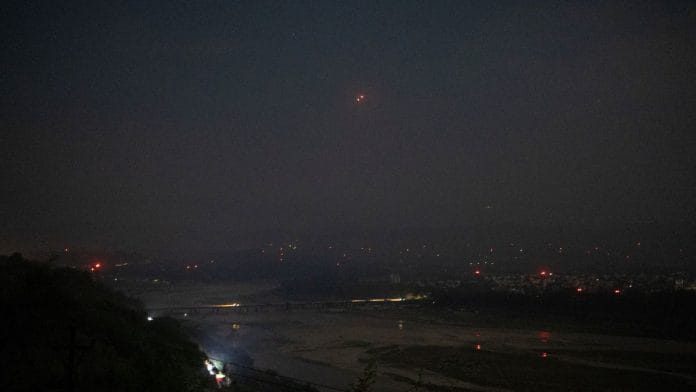New Delhi: Contrary to what the Pakistan military has claimed, the late-night Indian attack on military installations across the border was larger and deadlier, ThePrint has learnt.
According to initial inputs received so far, at least one transport plane of Pakistan has been destroyed, while two other critical aircraft have suffered moderate to severe damage.
A runaway at another critical airbase has been left non-operational for the next few months, at least with the kind of impact that the Indian missiles have made.
Sources in the defence establishment said that the Indian missiles that struck inside Pakistan were fired from positions well within the Indian airspace and outside the engagement range of Pakistan’s China-supplied air-to-air missiles, demonstrating deep strike capability.
While the sources refused to identify which missiles were used, they said the speed and the manoeuvrability aspect of the missiles ensured that they managed to hit the intended targets with pinpoint precision.
In a late-night statement, the Pakistani military’s information wing, Inter Services Public Relations (ISPR) DG, General Ahmed Sharif Chaudhry, alleged India had targeted the Pakistan Air Force’s (PAF) Nur Khan (Chaklala, Rawalpindi district), Murid (Chakwal) and Rafiqui (Shorkot, Jhang district) air bases.
However, the full extent of Indian targets was revealed during a press conference in the morning, held by Foreign Secretary Vikram Misri, Colonel Sofiya Qureshi and Wing Commander Vyomika Singh.
“After Pakistan deliberately targeted air bases, Indian armed forces took a quick and well-planned retaliatory action and targeted technical installations, command and control centres, radar sites and arms stores,” Colonel Qureshi said.
She added that Pakistan military bases at Rafiqui, Murid, Chaklala, Rahim Yar Khan, Sukkur and Chunian were targeted through air launch, precision ammunition and fighter jets.
“Radar site in Pasrur and the aviation base in Sialkot were also targeted with precision ammunition. During these actions, India ensured minimum collateral damage and losses.”
Sources said that the biggest setback for Pakistan took place at the Nur Khan air base, where Squadrons No. 6, 10, 12, and 41 are based. This is a VVIP-cum-transport aircraft base.
The aircraft there include C-130s and Pakistan’s only two IL-78 refuellers, besides the Saab Erieye airborne early warning and control (AEW&C) fleet.
The other big setback has been at Rahim Yar Khan, where an Indian missile left a huge crater right in the middle of the runway.
Sources said that if India wanted, they could have taken out some of the fighter aircraft standing there, but chose to just hit the runway to give Pakistan a view of their capabilities.
Sources also said that the aim of the loitering munitions and drone strikes that have taken place in the last three days inside Pakistan was not just to disable their air defence locations, but to send them a message by targeting certain locations.
(Edited by Sanya Mathur)
Also Read: Smoke, shrapnel & debris—in Punjab’s Bathinda, Pakistan’s attempted attacks leave a trail






